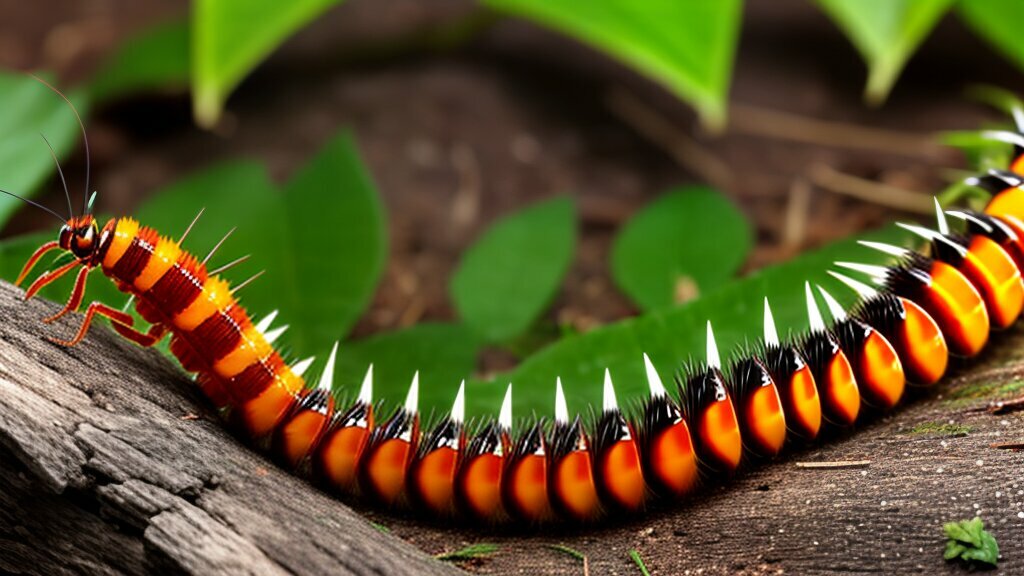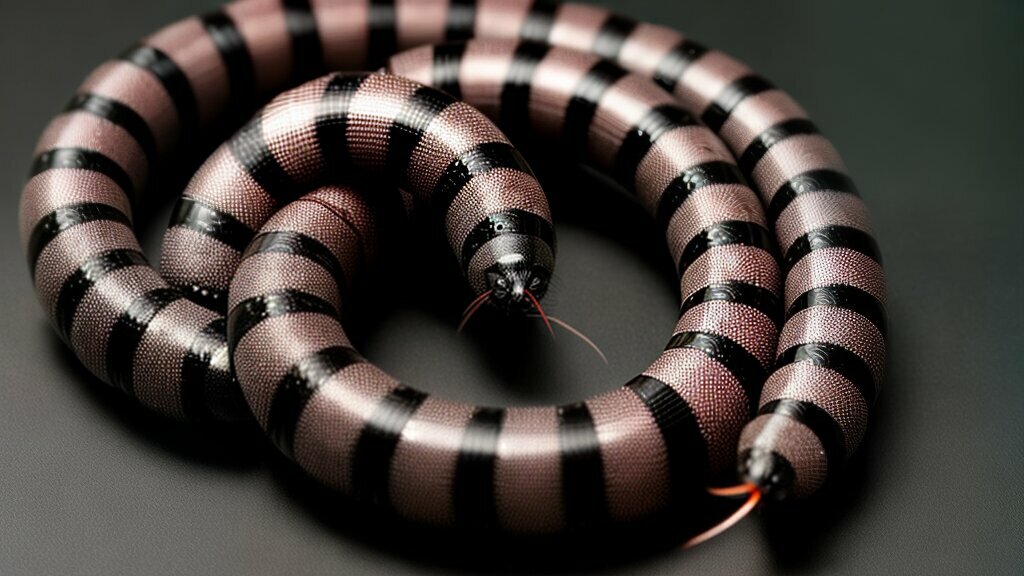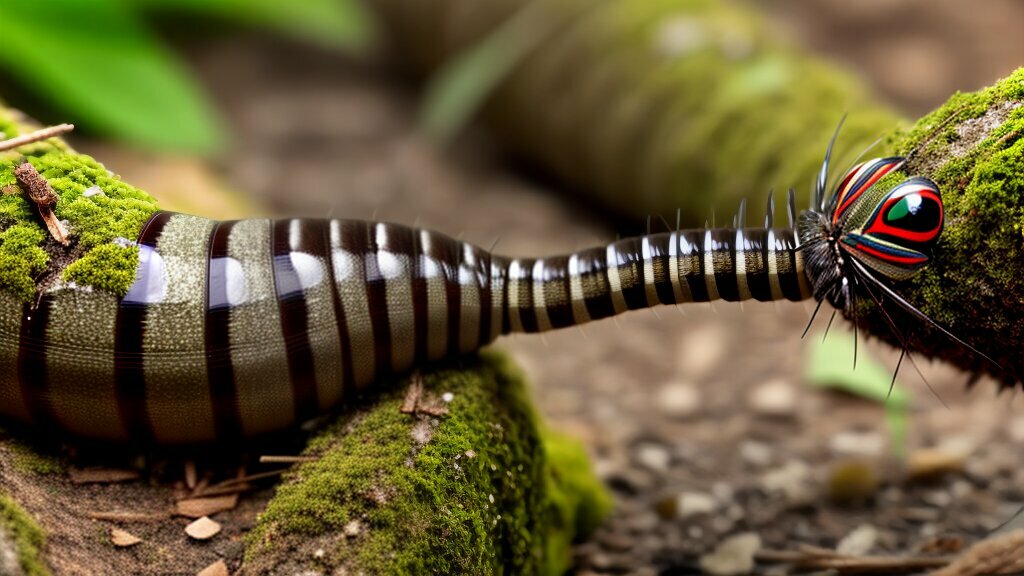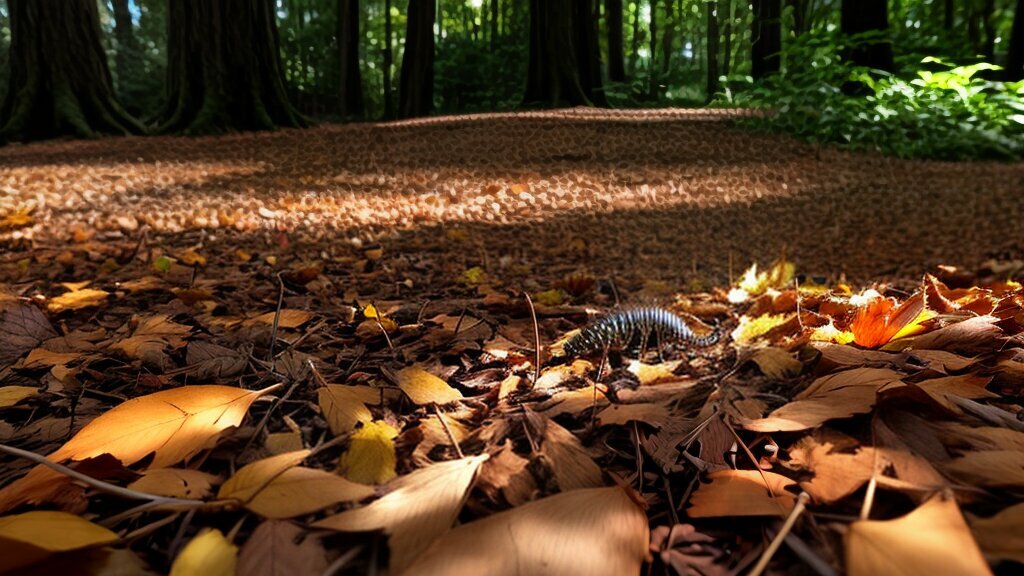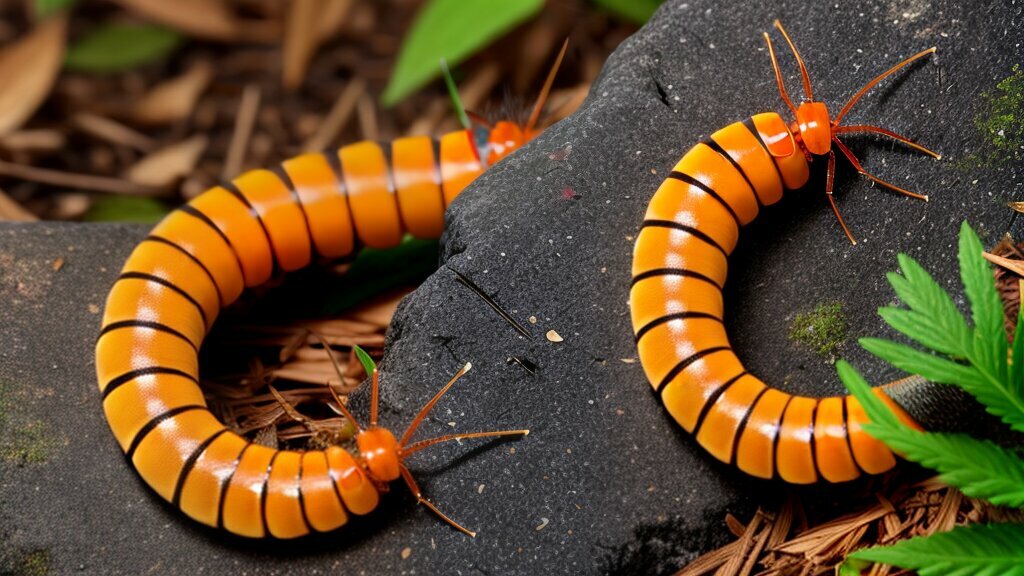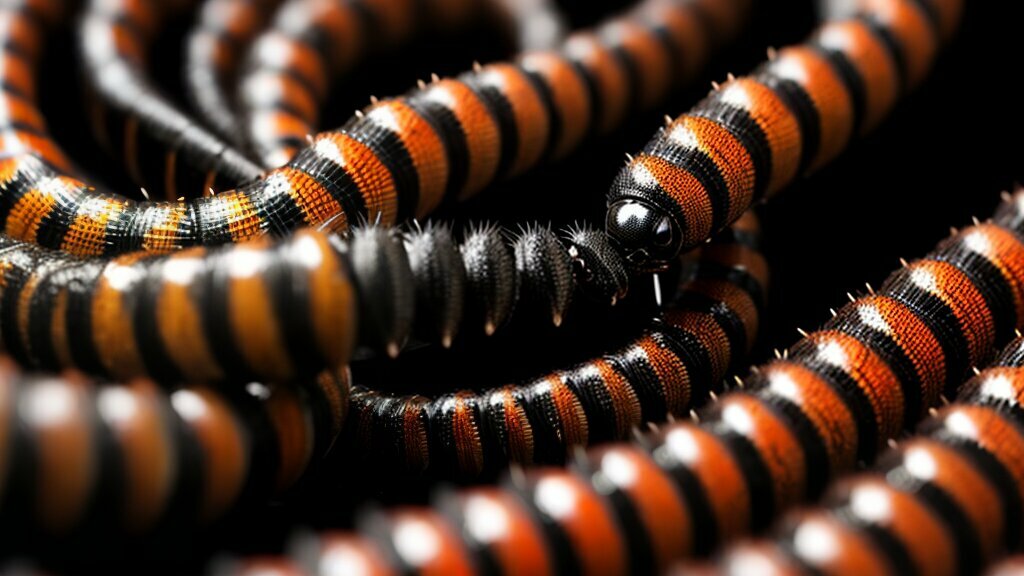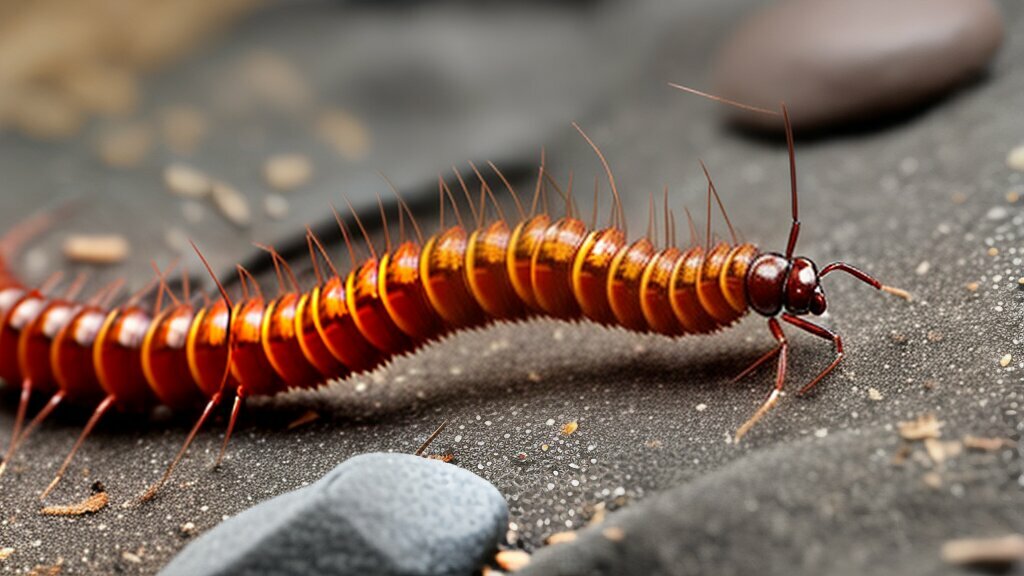Centipedes may be small creatures, but they possess an array of fascinating defense mechanisms that help them stay protected in their natural environments. From physical adaptations to stealthy tactics, centipedes have evolved numerous ways to avoid becoming prey to predators. In this article, we’ll explore the various ways centipedes protect themselves and the natural adaptations that have allowed them to thrive for millions of years.
Key Takeaways:
- Centipedes have multiple defense mechanisms that help them stay protected in their natural environment.
- They possess physical adaptations, such as venomous claws and the ability to regenerate lost limbs.
- Centipedes are agile and quick, making them difficult for predators to catch.
- They also use camouflage techniques to blend into their surroundings and avoid detection.
- Environmental factors can influence the ways in which centipedes protect themselves.
Understanding Centipede Defense Mechanisms
Centipedes have evolved various defense mechanisms to protect themselves from predators. Their adaptations range from physical attributes to biochemical defenses, allowing them to survive in their habitats.
Venomous Claws
One of the most well-known defenses of centipedes is their venomous claws. These claws are modified legs located near the centipede’s head that can deliver a potent toxin to any potential attacker. The venom is a mixture of peptides and proteins that can cause intense pain, paralysis, and even death in some cases.
Regenerative Abilities
In addition to their venomous claws, centipedes also have regenerative abilities. If a predator manages to capture and damage a centipede’s leg or other body part, the centipede can regenerate the lost limb in a relatively short amount of time.
Toxic Secretions
Some species of centipedes have developed toxic secretions that they can use for self-defense. These chemicals can be sprayed from glands located on the centipede’s body, deterring predators and protecting the centipede from harm.
Speed and Agility
Centipedes are also incredibly fast and agile, allowing them to evade predators and quickly retreat to safety. They can move in rapid, serpentine motions and squeeze through tight spaces that predators cannot follow.
Overall, centipedes have an array of defense mechanisms that allow them to survive in their natural habitats. Their physical adaptations, biochemical defenses, and behavioral tactics highlight the impressive resilience of these curious creatures.
Centipede Self-Defense Tactics
Centipedes employ various tactics to protect themselves from predators. One of their primary methods of defense is their agility and speed. They are incredibly fast runners, able to move quickly and evade capture, making them difficult prey for predators.
Another important defense mechanism centipedes use is their ability to camouflage and hide. They have a flattened body shape that allows them to squeeze into tight spaces, and some species have coloring that allows them to blend in with their surroundings.
Additionally, centipedes may emit warning signals to potential predators. Some species produce sounds or vibrations that alert predators of their presence, while others release defensive chemicals.
In some cases, centipedes may also play dead as a defense tactic. They will curl up tightly and remain motionless in hopes that the predator will think they are already dead and leave them alone.
These self-defense tactics are essential for centipedes to survive in their natural habitats. Their ability to evade capture and protect themselves from predators is crucial to their survival and allows them to thrive in a wide range of environments.
Predator Avoidance in Centipedes
Centipedes have developed a range of predator avoidance strategies that allow them to evade capture and survive in their respective habitats. One of the key ways in which centipedes protect themselves is through their keen sense of touch. Centipedes have long, sensitive antennae that allow them to detect vibrations and movements around them, providing an early warning system for potential predators.
In addition to their sensory abilities, centipedes also use their agility and speed to avoid becoming prey. They can move quickly and erratically, making it difficult for predators to catch them. Some species of centipedes can also camouflage themselves to blend in with their surroundings, making them less visible to predators.
Centipedes are also known for their burrowing behavior, which allows them to stay hidden from predators during the day and emerge at night to search for food. This nocturnal behavior helps them avoid detection by diurnal predators, which are active during the day.
| Fact: | Centipedes have been known to play dead as a last resort defense mechanism. By remaining motionless, they may trick predators into thinking they are no longer a threat and move on to other prey. |
|---|
Overall, centipedes have evolved a range of predator avoidance behaviors and adaptations that allow them to protect themselves in their respective habitats.
Camouflage Techniques of Centipedes
Centipedes are masters of camouflage, able to blend into their surroundings to avoid detection by predators or prey. Their coloration and body shape are key factors in their ability to evade danger.
Some species of centipedes have a dark brown or black exoskeleton that blends in with the forest floor or other shaded areas. Other species have a more colorful exoskeleton that matches the hues of flowers, leaves, or other objects in their environment. This allows them to remain hidden in plain sight, undetected by those who would do them harm.
Centipedes may also employ body shape as a form of camouflage. Some species have flattened bodies that allow them to squeeze into crevices and hide. Others have spines or bumps on their exoskeleton that help them blend into rocky terrain or other textured surfaces. These adaptations enable centipedes to evade predators without having to move or rely on their speed and agility.
Another tactic used by centipedes is mimicry, where they imitate the appearance of other inedible or dangerous creatures to deter predators. For example, some centipedes will curl up into a ball, resembling the shape and texture of a stone or pebble. This makes them unappealing to predators who would otherwise try to eat them.
In addition to these physical adaptations, some centipedes are able to alter their coloration to better match their environment. This is known as phenotypic plasticity, and allows centipedes to adjust their camouflage to changing conditions or new environments they encounter. It is an important survival strategy that has enabled centipedes to thrive in a wide range of habitats across the world.
The Importance of Centipede Camouflage
Camouflage is an essential aspect of centipede self-protection, allowing them to remain hidden and avoid detection by predators. Without effective camouflage, centipedes would be more vulnerable to predation and less able to survive in their respective environments.
Furthermore, centipede camouflage provides insight into the complex interactions between prey and predators in natural ecosystems. It highlights the evolutionary adaptations and survival strategies that have developed over time in response to environmental pressures and selective forces. Understanding centipede camouflage can thus provide valuable insights into the broader field of ecology and evolution.
Centipede Adaptations for Survival
Centipedes have evolved a range of adaptations to enhance their survival in their respective habitats. Their anatomy, sensory abilities, and unique physiological characteristics all contribute to their ability to protect themselves from predators.
| Adaptation | Description |
|---|---|
| Venemous claws | Centipedes have specialized claws that deliver venom to their prey or threats. |
| Regeneration | Centipedes can regenerate lost limbs, allowing them to escape from predators if necessary. |
| Toxin production | Some centipedes can produce toxins or secrete chemicals to deter predators. |
| Agility and speed | Centipedes are incredibly fast and can move with great agility, making them difficult to catch. |
| Camouflage | Some centipedes can blend into their environment through coloration or body shape, making them difficult to spot. |
| Mimicry | Some centipedes can mimic other inedible or dangerous creatures to deter predators. |
In addition to their physical adaptations, centipedes also have highly developed sensory abilities that aid in their survival. They have a keen sense of touch, which allows them to detect vibrations and movements of potential predators. They also have remarkable eyesight, enabling them to navigate through their environment with precision.
Overall, centipedes have developed a range of strategies and adaptations for self-protection, enabling them to survive in a variety of environments and avoid becoming prey.
Centipedes as Venomous Predators
Centipedes are known for their predatory nature and their venomous capabilities. These nocturnal hunters use their venom to subdue and immobilize their prey, which typically consists of insects, spiders, and other small animals. But centipedes don’t just use their venom for hunting – it also serves as a potent defense mechanism against potential threats.
Centipede venom is composed of a combination of peptides and proteins that vary in their chemical structure and effects. Some of these toxins are neurotoxic, targeting the nervous system of their prey or predators, while others are hemotoxic, targeting the circulatory system. The severity of centipede venom depends on the species and the individual, but in some cases, it can cause pain, swelling, and even death in humans.
Despite the risks associated with centipede venom, it’s worth noting that centipedes generally avoid interactions with humans and tend to be more afraid of us than we are of them. However, if provoked or threatened, they will not hesitate to use their venomous claws to defend themselves.
Environmental Factors Influencing Centipede Protection
Centipedes have developed a range of defense mechanisms and adaptations to protect themselves from predators. However, the effectiveness of these strategies can be influenced by a variety of environmental factors.
One such factor is temperature. Centipedes are cold-blooded animals, which means they rely on external sources of heat to regulate their body temperature. Extreme temperatures can affect their mobility and behavior, making them more vulnerable to predators. For example, in cold temperatures, centipedes may become sluggish and less able to evade capture. In contrast, high temperatures can lead to dehydration, reducing their ability to produce defensive chemicals and toxins.
Another environmental factor that can impact centipede protection is humidity. Centipedes require a certain level of moisture to survive, and changes in humidity can affect their behavior and physiology. High humidity levels can increase the risk of fungal infections, while low humidity levels can cause desiccation and reduce their overall fitness.
Habitat conditions can also influence centipede protection strategies. For example, in areas with high predation pressure, centipedes may exhibit more aggressive behavior and rely heavily on their venomous claws for defense. In contrast, in areas with abundant hiding places, such as leaf litter or crevices, centipedes may rely more on their ability to camouflage and remain hidden.
Overall, environmental factors play a crucial role in shaping centipede protection strategies. It is important to consider these factors when studying and conserving centipede populations, as well as other organisms in their respective ecosystems.
Predators of Centipedes
Centipedes may possess formidable defense mechanisms, but they are not immune to predation. The natural enemies of centipedes vary depending on the location and habitat of the centipede species.
One of the most common predators of centipedes are birds, particularly those with long, slender beaks that can easily extract the centipede from its hiding spot. Reptiles and amphibians, such as lizards, snakes, and frogs, are also known to prey on centipedes, using their sharp teeth to capture and consume the venomous arthropods.
Small mammals, such as shrews and rodents, may also hunt centipedes. In some cases, centipedes may even be preyed upon by larger species of centipedes, demonstrating the harsh reality of the food chain in the animal kingdom.
Despite their predators, centipedes have adapted various strategies for self-protection, including their venomous claws and the ability to burrow and camouflage themselves. The evolutionary adaptations of centipedes have enabled them to survive and thrive despite the constant threat of predation.
Centipede Survival Strategies
The various defense mechanisms and tactics discussed throughout this article highlight the impressive adaptability of centipedes in their respective habitats. Their physical adaptations, agility, predator avoidance strategies, and camouflage techniques all play a crucial role in their ability to protect themselves from potential threats.
As venomous predators themselves, centipedes have evolved to have robust defense mechanisms that can also serve as methods of attack. Their venomous claws, toxins, and secretions are integral to their survival in the wild.
Environmental factors also play a significant role in shaping the protection strategies of centipedes. Their ability to detect and respond to changes in habitat conditions and temperature fluctuations is a testament to their resilience and adaptability.
Overall, understanding the unique protection mechanisms of centipedes is essential in appreciating the vital role they play in their respective ecosystems. Their survival strategies provide fascinating insights into the ways in which nature has evolved to ensure the survival of its many diverse species.
Conclusion
Centipedes may be small in size, but they have evolved an array of sophisticated defense mechanisms to protect themselves from predators. From their physical adaptations like venomous claws and regenerative limbs to their behavioral tactics like camouflage and predator avoidance, centipedes have a unique and fascinating set of self-protection strategies.
Understanding the ways in which centipedes protect themselves can provide valuable insights not only into their ecology and behavior but also into the natural world at large. By appreciating the complexity and diversity of these defense mechanisms, we can better appreciate the intricate web of life that surrounds us.
FAQ
Q: How does a centipede protect itself?
A: Centipedes have evolved various defense mechanisms to protect themselves. These include physical adaptations such as venomous claws and the ability to regenerate lost limbs. They can also produce toxins and secrete defensive chemicals.
Q: What are some centipede self-defense tactics?
A: Centipedes employ several tactics to defend themselves. They are agile and fast, making it difficult for predators to capture them. Centipedes can also camouflage and hide, emit warning signals, or play dead as defense strategies.
Q: How do centipedes avoid predators?
A: Centipedes have several ways to avoid becoming prey. They have a keen sense of touch, allowing them to detect vibrations and movements of potential predators. Centipedes also use burrowing behavior and are active during nighttime to evade detection.
Q: What camouflage techniques do centipedes use?
A: Centipedes use camouflage techniques to blend into their environment. They can have colorations that match their surroundings or body shapes that resemble inedible or dangerous creatures as a defense mechanism.
Q: What adaptations do centipedes have for self-protection?
A: Centipedes have developed various adaptations for self-protection. These include anatomical features, enhanced sensory abilities, and unique physiological characteristics that aid in their survival in their respective habitats.
Q: Are centipedes venomous predators?
A: Yes, centipedes are venomous predators. They use their venom to immobilize and subdue their prey, and it also serves as a defense mechanism against potential threats. The composition and effects of centipede venom can vary among species.
Q: How do environmental factors influence centipede protection?
A: Environmental factors play a role in influencing the protection strategies of centipedes. Variations in temperature, humidity, and habitat conditions can affect their defensive behaviors and adaptations. Human activities can also impact centipede populations and their protection mechanisms.
Q: What are the predators of centipedes?
A: Centipedes have various natural enemies that pose a threat to their survival. These can include specific animal species or groups that prey on centipedes. Centipedes employ defense mechanisms to protect themselves against these predators.
Q: What are centipede survival strategies?
A: Centipedes employ a combination of defense mechanisms, tactics, and adaptations to ensure their survival. These strategies include physical adaptations, self-defense tactics, predator avoidance, camouflage techniques, and environmental adaptations.

